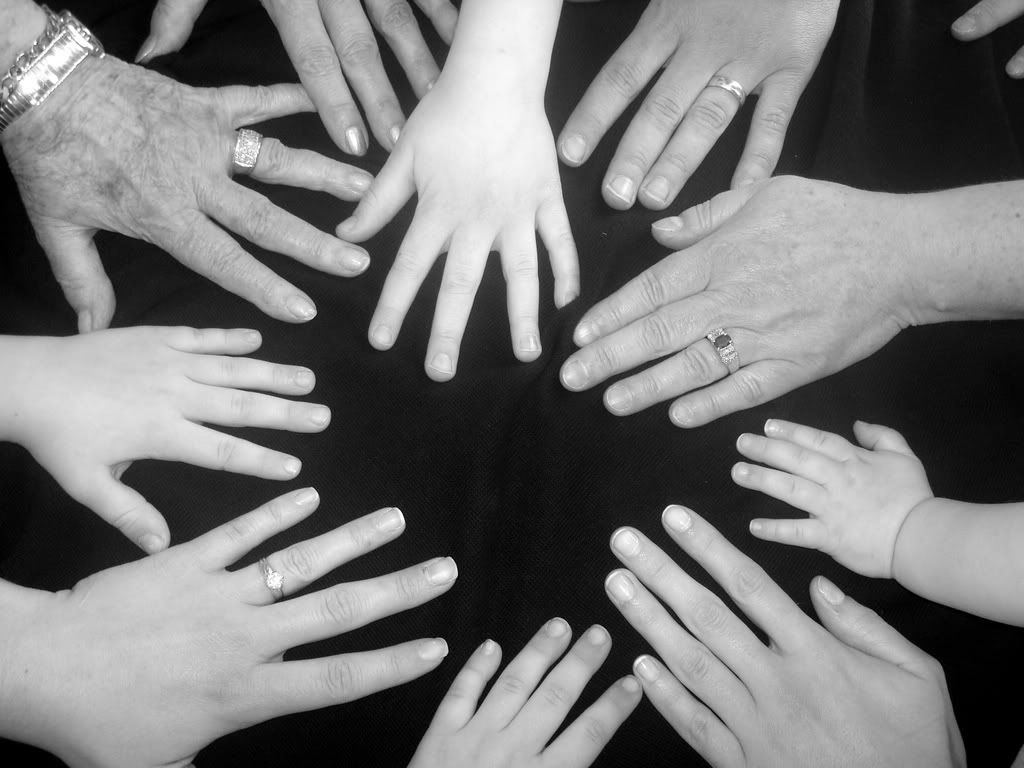
“The years that a woman subtracts
from her age are not lost. They are
added to other women’s.”
Diane de Poitiers

“The years that a woman subtracts
from her age are not lost. They are
added to other women’s.”
Diane de Poitiers

Yesterday’s post generated over 140 visits to my blog. This was the most I’ve ever had. Do you think this topic hit a nerve?
Since I asked for your experiences, I’ll share mine too. Like many of you, it’s a mixed bag. I’ve spent my adult life parenting and working part time jobs that are kind of academic but allow me to write. They deal with interests that matter to me. They pay well enough.
That’s all good. But now I’m reconnecting with passions I had as a child, before money was any concern. Words were there, but also the visual arts. And also, a process was there; an attitude—of exploring, losing myself in a creative activity, seeing where it will take me, and what I can make.
Age has convinced me that I have a contract with the universe, so to speak—or God, or whatever one chooses to call a higher power—to follow these passions. I believe they are there for a reason.
I spend time every day on one or more of these passions; blogging, gardening, flowers, or sewing. The process is almost more important than the specific task. I do love this. However, it only works one day at a time. Controlling outcomes does not work (for me). Maybe I’ll be “led” to work harder at making money. Maybe not.
I deeply believe that “more will be revealed” as to what my passions are for. And in the meantime, I’m keeping my day job….
Survey Results:
In doing what you love, will money follow?
(I’ve deleted some of the personal parts. If you want the complete words, you can read yesterday’s comments.)
Imogen Lamport said...I do what I love and I'm earning a living from it. I think when you do something you love you put lots of time and energy into it, so will more likely make money if you stick to it and keep working at it.
♥
Pyzahn said... I have not yet found my "passion", but I did walk away from a job that made me miserable and I have NO regrets. I still thank my blessings that I'm marching to my own drummer.
♥
Lola said... Yes! Yes! Yes!
♥
Protege said... It is my experience that the most happiest moments in my life have cost me no money at all. However tacky it might sound, the truth still remains - the best in life is indeed free.
♥
Northmoon said... I'm afraid that I don't believe in the "Do what you love and the money will follow." It's a catch 22. I wish that there was one clear, definite right answer for me, "Here you go, you are meant to do this." People who have a calling or a passion are very lucky.
♥
La Belette Rouge said...I keep doing what I love and the money has yet to follow. Maybe the money has followed and it didn't have my forward addressing and it was returned to sender.
♥
Doreen said... well, I like my job, and I make a decent living. I am thankful for my job also and the benefits that come with it. In that way I am blessed. But I would love to not have to work for a living! I would love to just take daily adventure with my camera. I need to win the lottery.
♥
studioJudith said...I'm glad you added the note
"a modest living,” for I would have to say that has been my experience for the past 20 years. I've been a self employed interior designer, choosing to do what I love. It's been quite a roller coaster.
♥
The Small Fabric Of My Life said...After 12 years as a staff journalist I went freelance. I always dreaded the work drying up. But it never did. New opportunities came. I have never had ambitions to earn a fortune but simply to earn a modest living from what I enjoy doing. That is a long way of saying "yes" to your question!
♥
Renee said... What an interesting question. Half the time I don't even know what I would like to do. But I think that if you love something, that money could follow it. But there would have to be balance. You could love what you do but then you would have to market it at some point to sell it.
♥
ethelmaepotter! said...This is a most thought-provoking question. The simple answer is no, but there is so much to consider. My JOB allows me a bit of time and money to indulge in my passions. And, if made money on my passions, would they continue to be my passions, or would they press upon me with urgencies and deadlines, and cease to become my passions, and rather become dreaded chores?
♥
Modest Mom said... I always find that when I'm doing what I love I can live on less and not feel deprived.
♥
drollgirl said...I am not sure about this. I have always loved art, so i have worked in the arts for years and years. Most jobs can be rather aggravating, even in the arts, but I find if I am not surrounded by what I like it is MUCH, MUCH WORSE!
♥
Sparkling Red said...I do love my job, although the love developed in time, like an arranged marriage.
♥
Cynthia L. H. said... I have spent years following my dreams...usually the money followed someone else. I also spent a lot of time doing what "had to be done..." and leaving the dreams until last. Now, I have put the dreams first. There is still so much "work" involved. I don't mind the hard work. I just really am ready for the pay-off.
♥
Lianne said... It's good to read what others have experienced. Maybe the question for me is not doing what I love, but loving what I do.
♥
Sher said... I say no. If you are lucky to be in a profession you love and it's making enough to live the way you want to live....then you are lucky. Other wise there are compromises.
♥
tiffany said...Great question. I can't say I love what I do 100%, but a few years ago I wrote myself a list of what I wanted. . My current freelance work landed in my lap a short time later. So I may not adore what I do, but it plays to my skills, gives me flexibility and pays very well. I never forget how lucky I am.
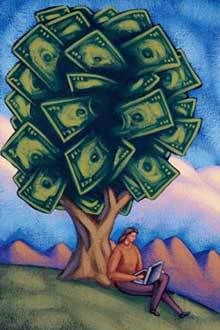
I’m really interested in this. Has it ever happened for you that you did what you loved and the money followed? I’m not talking piles of money—maybe just a modest living.

Or, do you need to work to eat, and do what you love in your free time? Tell, tell! This should be interesting. ♥

Hi, Everyone. It’s me, Vanna White Dog. For those of you who don’t know me, I’m the cutest (and maybe the only) gender-bending doggie in North America. You can read more about my modeling career here.
For this week’s Flowers de la Semaine, Clover and I channel flower children with daisies from the Motherdog. Most of you know the Motherdog as Sallymandy.
This photo shoot comes from the cabin at Placid Lake that the Greatgrandfatherdog built about fifty years ago. We spent four exhausting days there.
Now. Let’s talk about me.
Is my daisy chain too long? Does it make me look fat?
Clover got some daisies, too.
I think she looks a little funny. Kind of like those people we used to see in Haight-Ashbury back in ‘69.
Here’s another picture of me on the cabin porch. I’m posing with flowers the Motherdog put in the Greatgrandmotherdog’s yellow thingy. Some kind of “Fiesta ware gravy boat.”

I don’t get the fuss about this object. We did not have a fiesta, and there was no gravy. Instead, the Motherdog filled the boat with flowers she picked on a looong walk with Clover and me.
She says these flowers are:
Ox-eye daisies…
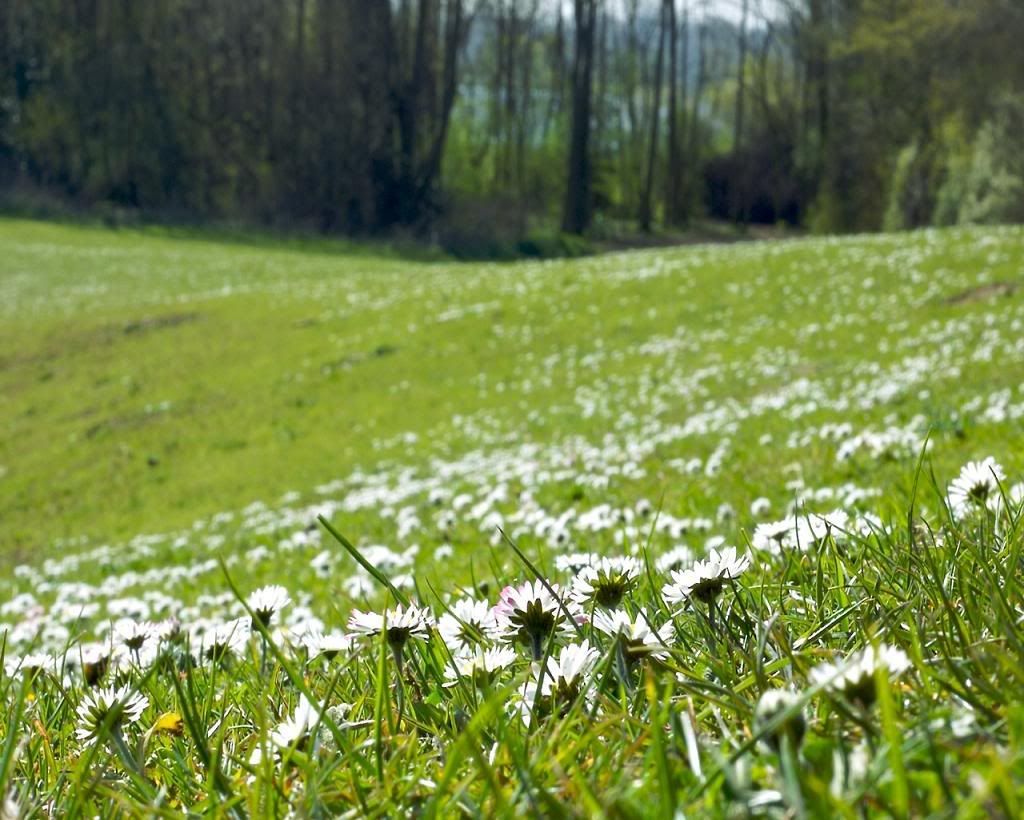
Montana harebells…
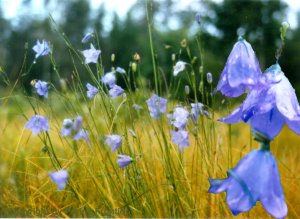
and…wild onions?!
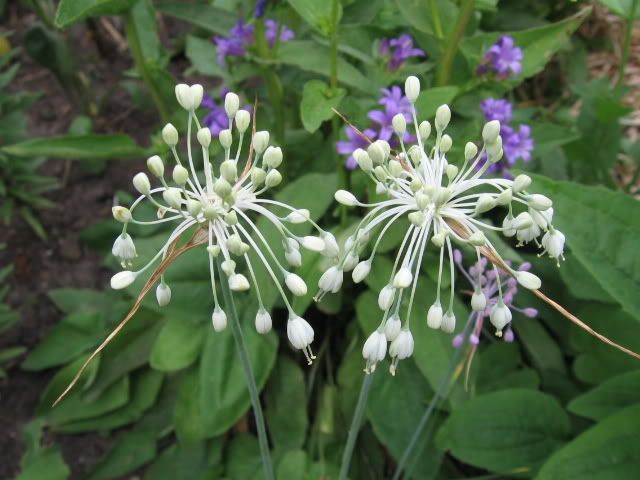
Gee whiz. Ox! Hare! Onions! Clover and I got pretty hungry on this photo shoot.
The Motherdog gave us a treat when our work was done…
…and that was pretty groovy.
Peace, Love and Understanding….Vanna/Riley, and Clover
The Lake
Lakes are the holding places
For water
As the fireplace
Is the holding place for fire,
As the plaza is the holding place for people.
I know a lake in the mountains.
My heart is the holding place,
My heart is the keeping place,
For the things I know
About the lake in the mountains.
Always will I keep
In my heart
The things that belong there,
As lakes
Keep water
For the people.
……….Ann Nolan Clark
photos from www.photobucket.com. click on photos for links
“Promise me you'll always remember:
You're
braver than you believe,
and
stronger than you seem,
and
smarter than you think.”
A.A. Milne
Do you ever write a post and send it out feeling generous and wise, only to realize you wrote it for yourself?
I just noticed that I do this.
I just noticed that today, I feel like a small turtle on a giant finger. The finger is all the forces beyond my control—those having to do with jobs, security, relationships. These forces could be negative thinking, fear, or blame—all patterns I fall into that bite me in the hiney.
Alternately, the finger could be a big benevolent power greater than myself. God. The dharma. The universe. Whatever one chooses to call it, the hand I sit in can crush and rescue.
Smallness feels like confusion and sorrow. Not understanding where to put one’s flippers. What’s in that water over there? If I jump, will I learn to swim?
I think that I will.
Note to self, and anyone else who feels small: Promise me you’ll always remember. Braver, stronger, and smarter.

What does it mean to simplify?
I wondered this as I woke up from a nap on the couch this afternoon. Not for the first time, it felt daunting to look around my home and behold the dust and clutter. It’s not actually a pigsty—but neither is it the same kind of clean living space I grew up with.
Not for the first time I had a fleeting notion that if I only had a different house—the right house—my life would be more simple. Here’s what this house would have (for starters):
Next I thought about what it would take to get this simpler, more efficient house. First, I’d need more income. That would require a different job. The new job would probably require some new skills. I’d need to shop for an interview outfit, then write a new resume.
The new job would likely require moving to a new city, because chances of finding a better job in this city are next to nil.
Then I’d have to sell the current house—not to mention convincing my family of the wisdom of all this. I’d have to get out every item of crap in the house and do something with it. Handle at least once, if only to throw it in a box. Ideally, I’d sort it, giving some away, taking other stuff to the recycling center.
If I didn’t want to do this myself, I’d need to hire someone.
Will my life be simplified by getting a more efficient house? No. Today, simplest house is the one I’m already in.

I find myself in a quandary. We’re living between value systems—the old one being my mother’s, in which most married women kept their houses clean. It probably sucked, but at least everyone was doing it. Truly, the only people I know with clean houses have other women come in and clean them. Not one of my friends keeps her—or his—house like our mothers did.
The new value system is that which puts work, relationships and family time above housekeeping. This has to be good. Yet the piles in my house reach a critical mess eventually and I find myself not wanting to go home. Our environments do make a difference. Dusting does matter.
How to balance all this out? If it were really as “simple” as getting some new organizers, or devising “staging areas” around the house, or “delegating housework,” or setting up a “family organization center,” don’t you think I would have done that already?
By “you,” I’m addressing people who write those articles in women’s magazines with titles like “Put an End to Clutter Once and For All;” usually freelance writers—of whom I used to be one, so I’m not just pointing my finger at random others—who are coached to “write what you know” and “tell an old story in a fresh, new way,” and “sell to your audience;” and who are themselves probably stressed-out women whose lives seem unmanageable for one reason or another and whose editors advise that it’s easier to write about changing your kitchen drawers than about on getting a grip on your entire effing life, and besides, no one would buy the latter one anyway.
To borrow from the philosophy of Twelve Step programs, I submit that uncontrollable external situations, very often, are inner messes made visible. Things become unmanageable because we try to control forces over which we really don’t have any power.
(Note to self: insanity is doing the same thing over and over again and expecting different results.)

I’ve done some reading on home organization, time management, voluntary simplicity, and stuff like that. It’s all been helpful. I now use an empty ice cube tray to hold my earrings, and store kitchen utensils near the space where they are used. These are victories! They feel good!
But how far can this approach take us? As I surveyed my living room today, horizontally, I wondered: will I ever go through my entire house and devise little systems for simplifying everything, having a place for everything and then keeping everything in its place? Like the paper clips and obsolete computer software? The elastic hair thingies and the recycled ziploc bags?
Well, yes or no?
If my answer’s no, then what? Am I going to throw out all this stuff in the interest of paring down to non-essentials? It sounds really, really, good. I can live without twisty-ties, and clipped out magazine recipes. But what does a simplified person do when she really needs a paper-attaching implement and has thrown out her paper clips and maybe staples, too? At what point does paring down because a royal pain in the ass, counterproductive and complicated?

There has to be a better way to simplify than focusing on external stuff. Maybe if we could get back to basics with our inner lives, we’d find ways to simplify our environments. Or the messes wouldn’t bother us so much.
When all is said and done, it’s simpler—not easier—to do the internal work first. After all, the two are not separate. In dreams the house is a symbol of the self. Is a cluttered house the sign of a cluttered self? Absolutely, in my case.
Some days, the best way to simplify is to start with the only things we can control, that are ours. The body. The mind. The breath.
The breath is the foundation of meditation. It is a continual life force that connects us to the rivers of life and nature and the earth; to that which is bigger than we are. We can learn to control thoughts and actions—but nothing else. I believe that doing this opens the mind to solutions about the rest of the stuff. The key is remembering what we can control and what we can’t.

What do you think? What does it mean to you to simplify?

Beauty of style and harmony and grace and good rhythm depend on simplicity.
Plato
photo used with permission from www.thesartorialist.com
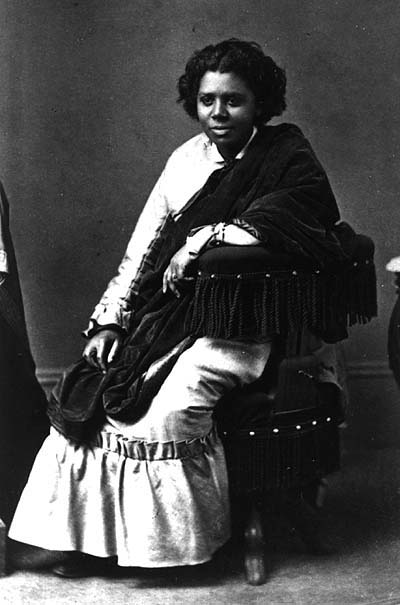
Unk., Edmonia Lewis.
Many readers love posts about women artists as much as I love finding the history and images to share. The story of Edmonia Lewis is one of the most compelling and inspiring I have found yet. click on the photos for links to their sources.
Edmonia Lewis was born in the mid-1840s and died sometime after 1909. It appears her father was a free African from the West Indies and her mother was a Ojibway mother. Edmonia told interviewers that her given Ojibway name was “Wildfire.”
Along with a brother, Edmonia was orphaned at a young age. Her older brother Samuel became a successful businessman in Bozeman, Montana, and financed Edmonia’s secondary education at Oberlin College—the first American institution to admit women and African Americans.
Here are two photographs of Edmonia taken by Henry Rocher about 1870, and currently in the collection of the Smithsonian Institute in Washington, D.C.


Edmonia faced discrimination at Oberlin College and left before she graduated. But she knew what she wanted. Again with her brother’s help, she went to Boston to study with the neoclassical sculptor Edward Brackett. Like any artist, her career was a combination of extremely hard work, garnering patrons, and networking.
Many of Edmonia’s friends were members of the American abolitionist movement. Eventually, and against tremendous odds, she began to establish a name for herself as an artist facing three social obstacles: being female, African American, and Native American. She publicly identified herself with these threads of her identity, and chose subject matter that held meaning to oppressed people and women.
Two of her earliest works depicted the abolitionist martyr John Brown, and Robert Gould Shaw, the white commander of an all-black regiment in the American Civil War. Partially financed with the sale of these pieces, Edmonia traveled to Italy to further her career. In Rome, she joined a community of American sculptors—including several notable women—and occupied the former studio of the Italian master Antonio Canova.
Here is a study of Moses, made after the masterpiece by Michelangelo, completed during Edmonia’s time in Rome.

Edmonia Lewis, Moses (after Michelangelo), 1875. Smithsonian Institute.
Fearing that others would not believe her work was truly her own, Edmonia shunned the practice of roughing out her sculptures and hiring Italian artisans to carve them. Instead, she completed all her own work.
One piece created during her time in Rome was the bust of Henry Wordsworth Longfellow, below. Inspired by the poet’s work, “The Song of Hiawatha,” Edmonia had already created sculptures based on his Native American themes. When she heard that the poet was visiting Rome, she found him in the street, studied his face, and created this bust.

Edmonia Lewis, Bust of Henry Wadsworth Longfellow, 1872.
This sculpture, Hagar, was also made in Rome.

Edmonia Lewis, Hagar, 1875.
In 1876, Edmonia Lewis sculpted what is known as her masterpiece, The Death of Cleopatra. This interpretation of the fallen queen stands out because it shows her, vulnerable and stricken, just after being bitten by the asp. The piece generated a stir when it was shown at the Philadelphia Exposition in 1876 and again at the Chicago Interstate Exposition two years later.

Edmonia Lewis, Death of Cleopatra, 1876. Smithsonian Institute.
Another important work is Asleep, below. This is one of four cherub pieces created around 1870. Asleep won a gold medal at the International Exposition of Paintings and Sculpture, held at the Academy of Arts and Sciences in Naples.

Edmonia Lewis, Asleep, San Jose (CA) Library.
There are many sources of biographical information on Edmonia Lewis on the Internet. I’ve used the one I thought was the best researched and most credible, here. Please click on the link for much more information about this amazing, inspiring American artist.
"Some praise me because I am a colored girl, and I don't want that kind of praise. I had rather you would point out my defects, for that will teach me something."
Edmonia Lewis to Lydia Maria Child.

Helene Schjerfbeck in the 1890s.
The Finnish artist Helene Schjerfbeck (1862—1946) painted mainly works depicting women, children and the home. In the 1890s she simplified her style, eliminating background detail and reducing her palette. These stylistic changes are seen in many of the portraits she painted of herself, her mother, and others.

Self portrait, 1912.
“[Helene Schjerbeck]…was supposedly a Realist, a Romanticist, an Impressionist, a Naturalist, a Symbolist, an Expressionist and a wildly ahead-of-her-time Abstractist. Truthfully, there were elements of all of these in her work as the decades progressed and one would not be incorrect using any of these terms. But in the end she stripped herself of all save that which symbolized 83-years' worth of learning to see.” From About.com, Helene Schjerbeck.

School Girl in Black.
“When the subject of a portrait is the artist's own mother, the relationship between the two is particularly interesting. Helene and Olga Schjerfbeck were very close…but their relationship was never open or without conflict. It was customary at the time for an unmarried daughter to take care of her ageing parents, which in practice meant living in the same household. Olga Schjerfbeck was a strong-willed woman, whose needs and whims her daughter tried to satisfy as best she could. The mother in turn viewed her adult daughter still as a little girl who needed care and protection, and she never fully learned to understand her daughter's profession.” From Museums in Motion, notes on exhibition titled “The Golden Age of Finnish Art.”

At Home, Helene Schjerbeck’s portrait of her 64-year-old mother sewing.
For more information about Helene Schjerbeck, click here.

copyright Ken Brown.
sallymandy is on vacation for a few days,… so is leaving you a few things she likes. hope you like them too. ♥♥♥
No, we aren’t wonder dogs who stand still for the camera. Sallymandy had to yell “WALK” to get us to look at her.


Getting a little bit arty. How do you like it?
These are local flowers from the natural foods store. We hope you enjoy them.
Woof.
♥
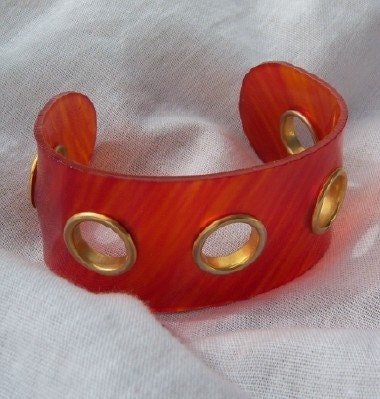
Vintage cinnamon striped (plastic) tortoiseshell cuff, Dahliha Found, $18 USD.
More budget-friendly jewelry from Etsy.
See yesterday’s post for Chapter One.
I want every one of these!
Are these worthy of self-bribery, or what??
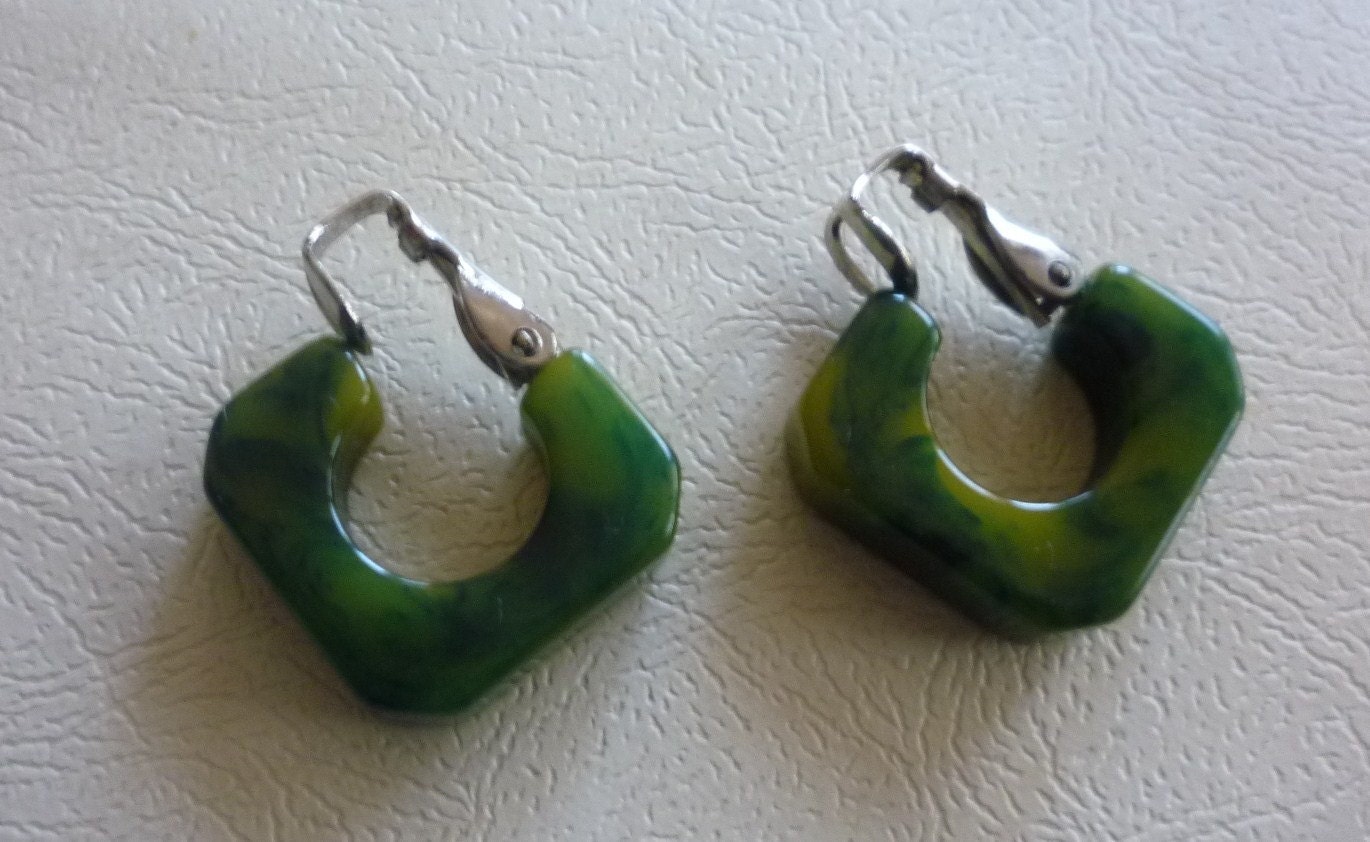
Vintage Green Bakelite Earrings, Claridad, $12 USD.
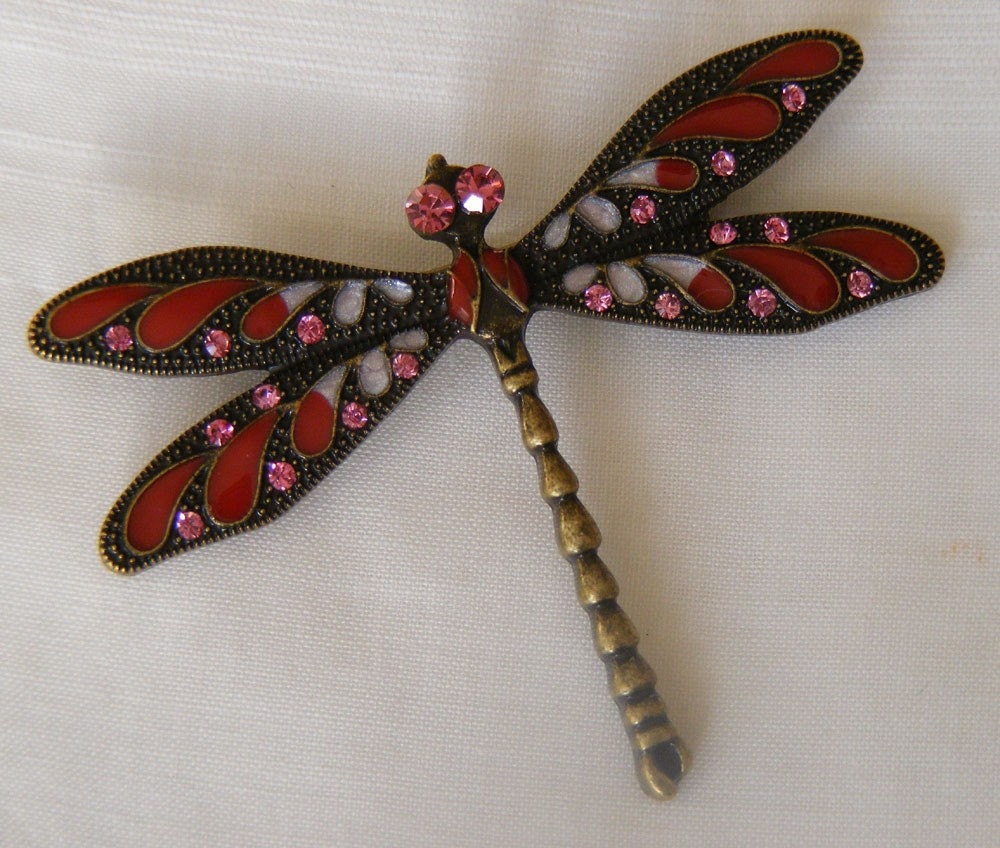
Vintage Dragonfly Brooch, Recycle Eh, $19.95 USD.

Art Nouveau Cuff, Soursweets, $20 USD.
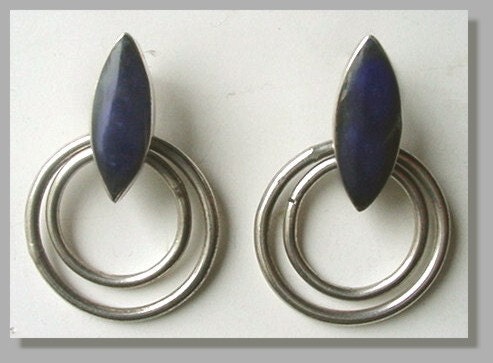
Vintage Sterling Silver Earrings with deep blue malachite, Eternal Jewels, $10.99 USD.

Black Bakelite Bracelet, True Colors for You, $25 USD.
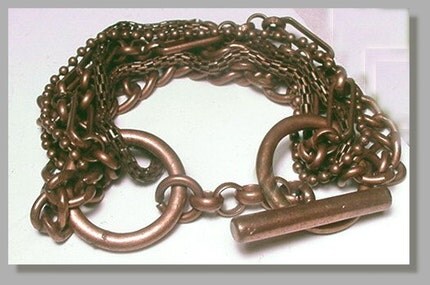
Funky Punky Vintage Copper Chain Bracelet, Eternal Jewels, $9.99 USD.
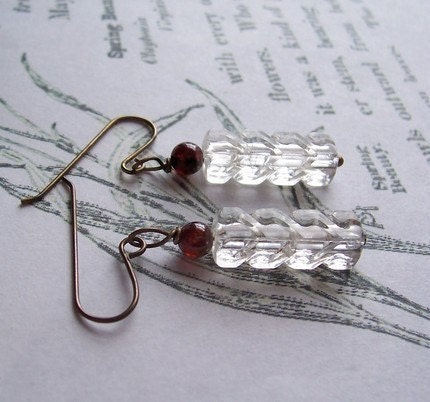
Early Candlelight Earrings with vintage lucite beads, Three Dollar Earrings, $3.

Vintage Sterling Earrings with moonstone drop, Eternal Jewels, $9.99 USD.
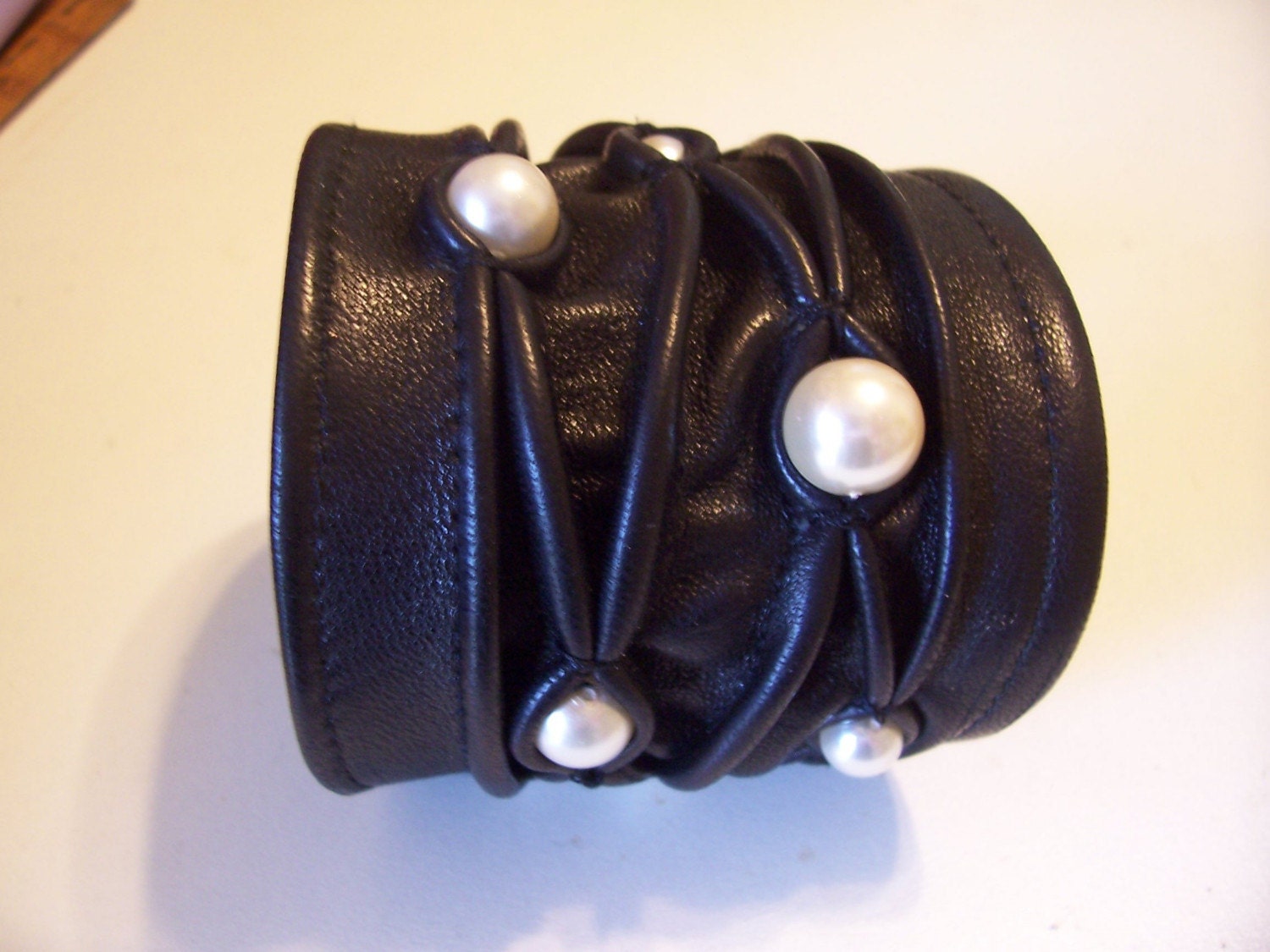
Black Leather Cuff from Recycled Skirt, with pearl glass beads, Joaniemo, $17.00 USD.

Vintage Bakelite Tortoiseshell hoops with new pierced earwires, Brees Vintage Revivals, $12 USD.
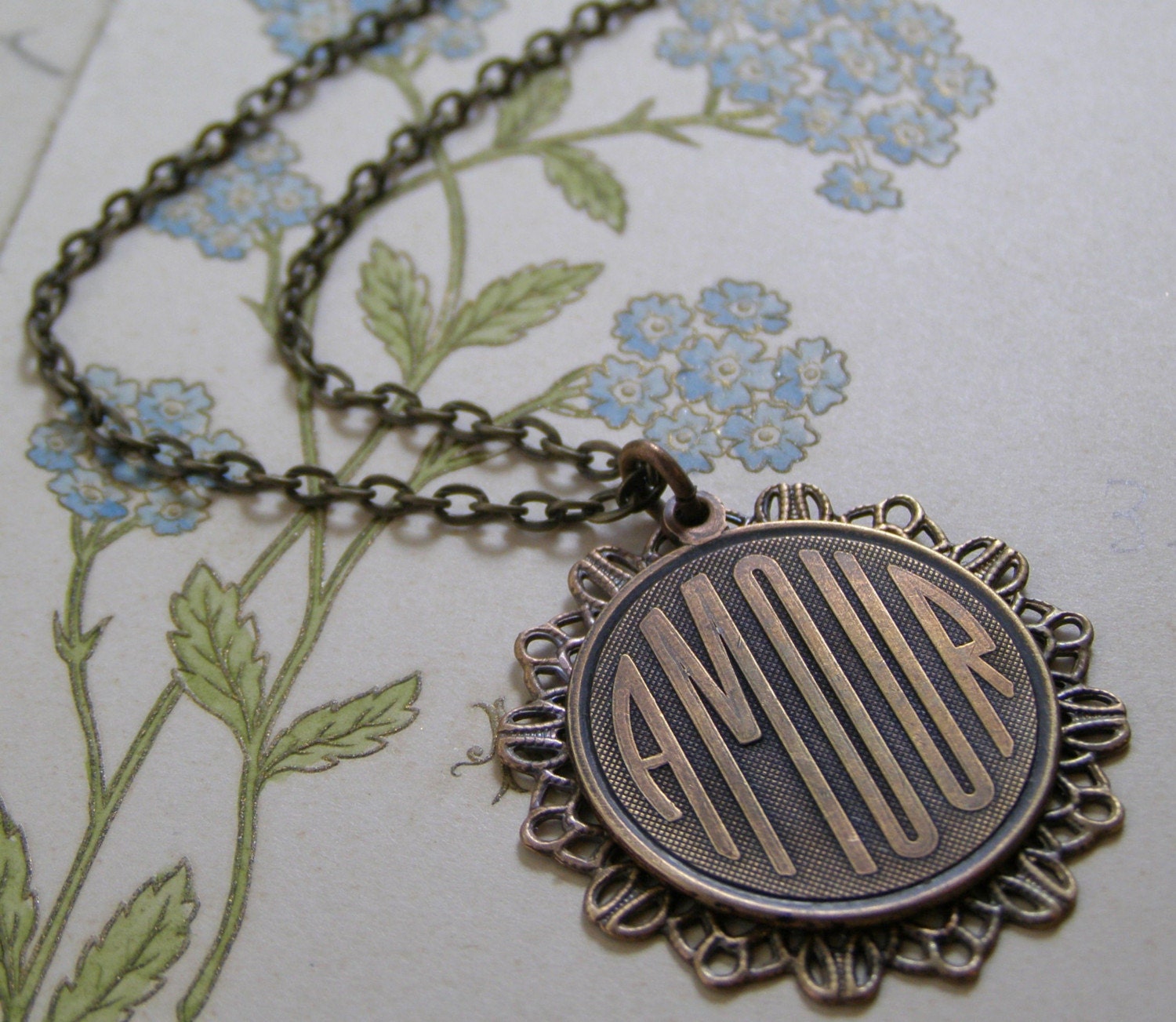
Amour necklace by My Lavaliere. $22 USD.
which of these is your favorite?